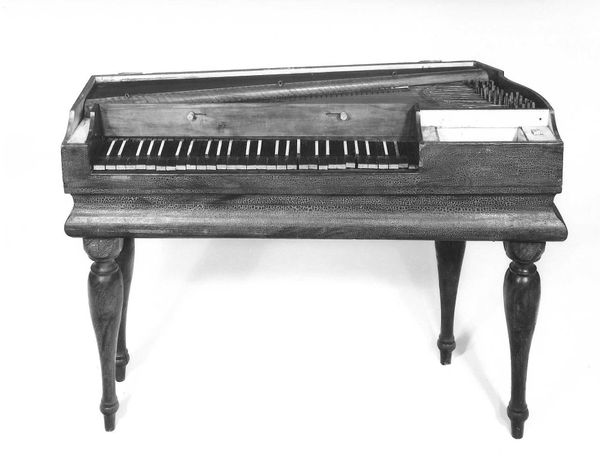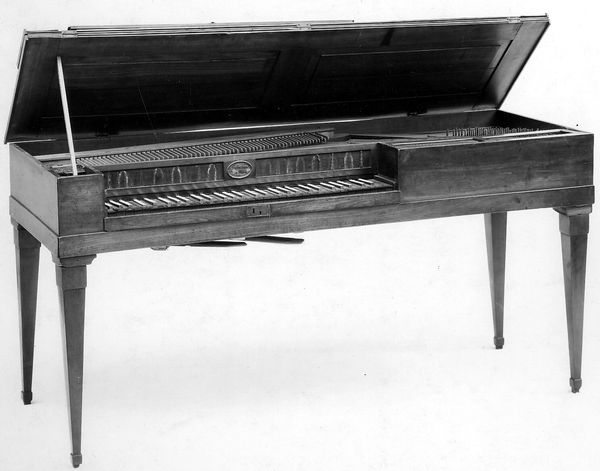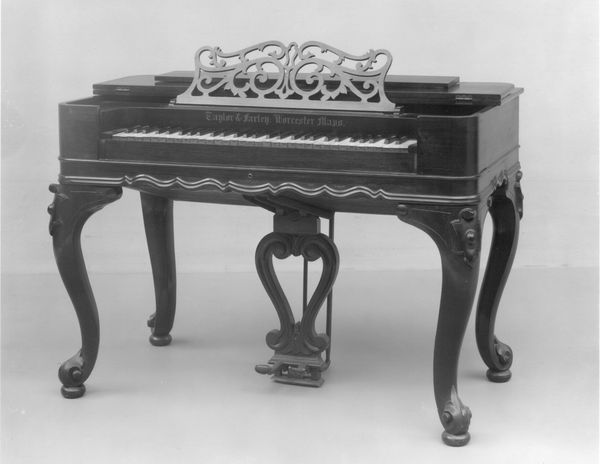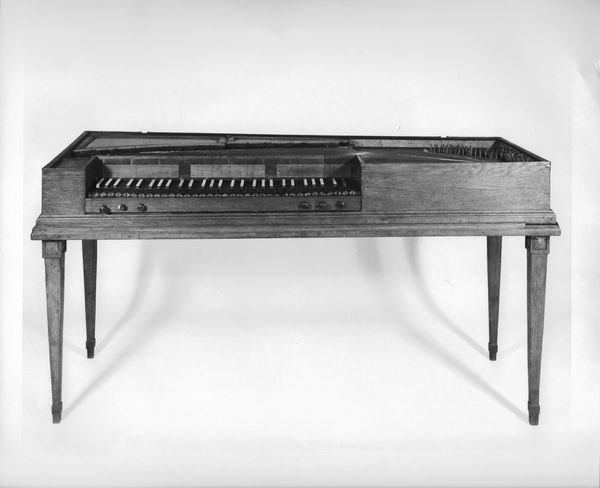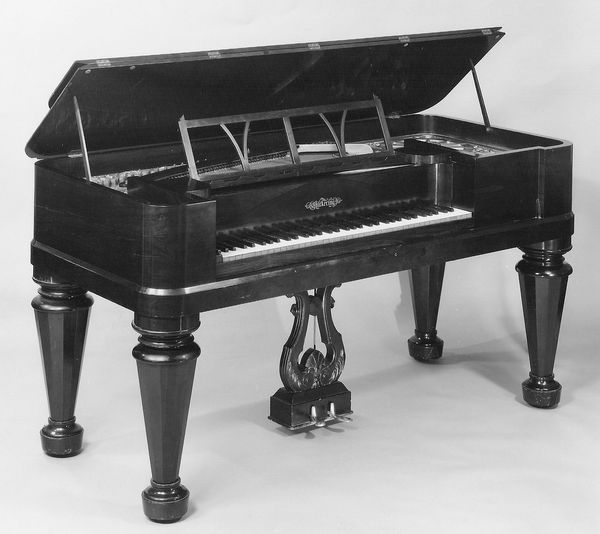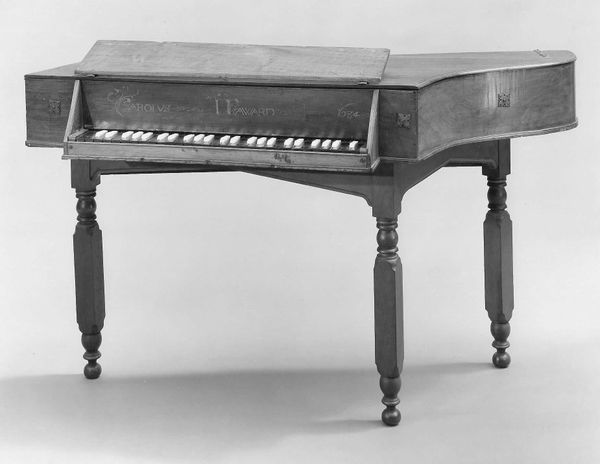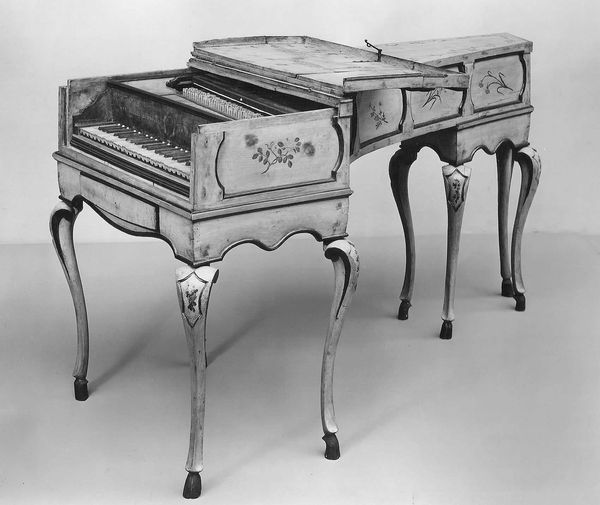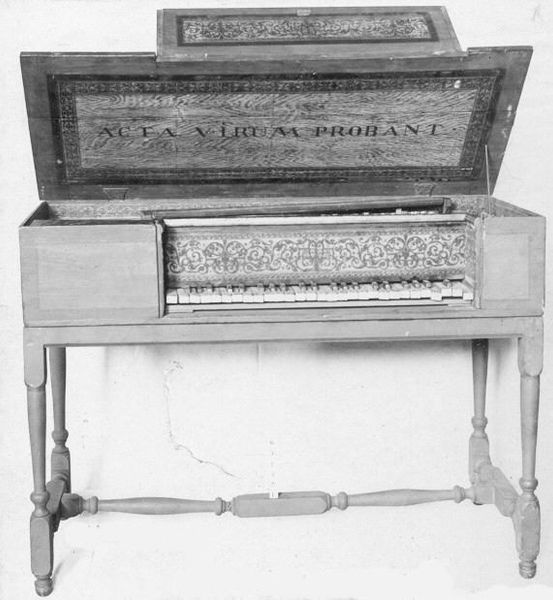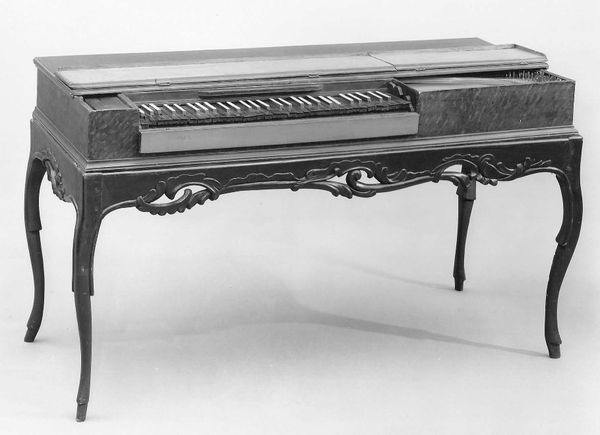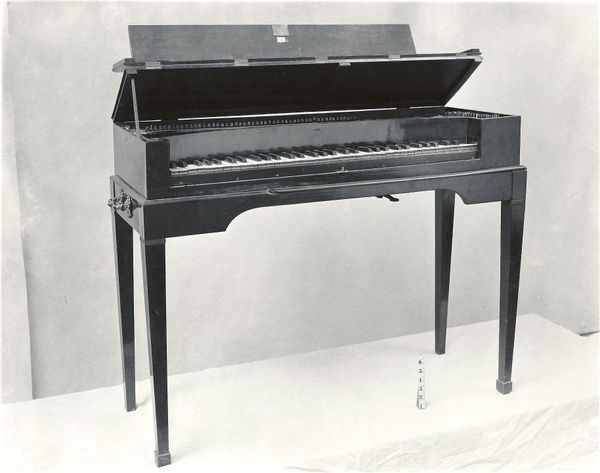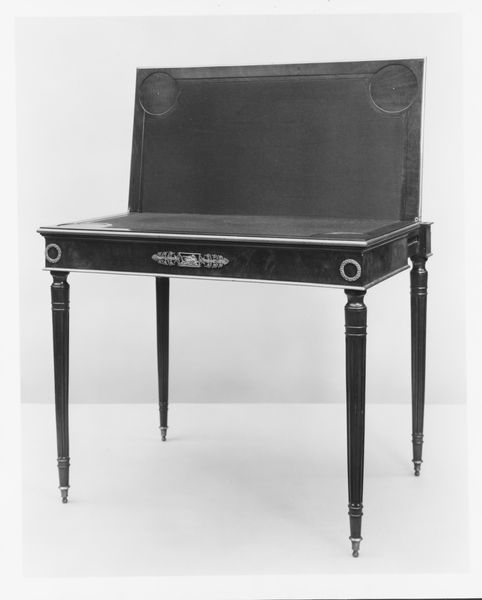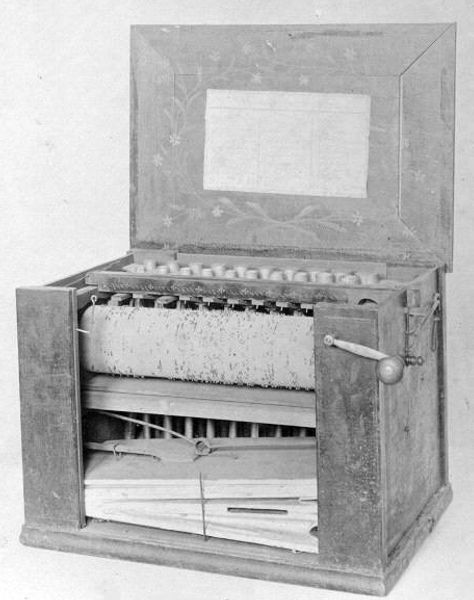
#
sculpture
#
france
#
monochrome photography
#
men
#
musical-instrument
#
monochrome
Dimensions: Height: 112.8 cm (44-1/2 in.) Width: 127.9 cm (50-3/8 in.) Length (perpendicular to keyboard): 69.7 cm (27-1/2 in.) 3-octave span: 49 cm (19-38 in.) Height of chair: 94.6 (37-1/4 in.)
Copyright: Public Domain
Curator: The object before us, called "Harmonium", dates back to 1886. It was crafted by Victor and Auguste Mustel, and is now held at the Metropolitan Museum of Art. Editor: It has such a somber air about it, doesn't it? The monochrome rendering really amplifies that sense of stillness, that almost... reverential quiet. I can almost hear the faint, melancholic chords resonating from its frame. Curator: The Mustel family significantly shaped the production of harmoniums in France during the 19th century. Their instruments became emblematic of bourgeois domestic life. They allowed the expanding middle classes to experience the sonic pleasures of organ music within the constraints of home and social expectations. Editor: I imagine parlors filled with embroidered cushions and the scent of potpourri, perhaps a young woman practicing scales with determined concentration while a disapproving governess looms nearby. The sheer mechanics are intriguing; how does that foot-pump action translate into melodious sound? It's a fascinating bit of engineering masked by polite aesthetics. Curator: Well, the bellows, operated by foot pedals, force air across the reeds to generate sound, an efficient mechanism fitting within the confines of the domestic space. Furthermore, instruments such as this facilitated the domestic production of music as a form of feminine accomplishment and artistry in private, thereby indirectly mirroring the historical gender dynamics prevalent in musical practices. Editor: Precisely! It’s a microcosm of Victorian aspirations. Beautiful, controlled sounds emerge from carefully modulated breaths and prescribed behaviours. This is all conjecture of course; still, its beauty resonates powerfully across time. The elegant chair just completes the vignette. I think its silence speaks volumes! Curator: In observing objects such as these, we find a critical lens through which we engage not only art history but broader societal configurations of gender and class at that historical juncture. Editor: And it reminds me to play my ancient piano a bit more often and find new meanings within the beauty of sound.
Comments
No comments
Be the first to comment and join the conversation on the ultimate creative platform.

